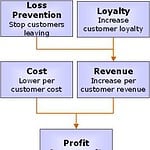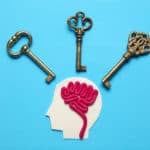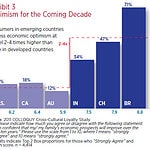Achieving customer loyalty is well known to be a long term driver of company success and value but how do you do it? If you have already acquired a customer there are 3 important steps to achieving customer loyalty.
1. Understand what drives customer loyalty
To have loyal customers you must deliver what they want. That seems simple enough, but what do they want? Getting to the heart of what customers want is not quite as easy as just asking them directly.
If you ask a customer;
How import is price?
How important is service?
How important is function?
You will get a series of 10/10s. So you know nothing more than you did before you asked. But there are ways to understand what is important to customers. Use them and when you do you may be surprised at the outcome.
For instance, in IT support desk situations closing the loop with the customer after a problem is solved is often a more important driver of customer loyalty than solving the problem in the first place. I know that sounds wacky but support desk staff that solve problems in seconds but never tell the customer why, how and (most importantly) “why not again”, have lower loyalty that those that spend a few seconds closing the loop with the customer.
In these situations soft skills training (how to deal with customers) can be as important as or even more important than technical training.
Also, remember that your customers are not benchmarking your service against just your competitors but also against the best of their personal experiences. If your software product has a search function, users are not benchmarking your search experience against your competitors but against Google. That may sound unfair but it’s a fact of life.
2. Enable your staff to deliver
Most of your staff (95%) are not out to cause problems and upset customers. They are just trying to do their best. In doing their best they have at least four constraints within which they work;
- Their knowledge of what drives customer loyalty
- Their skills and training
- The tools you have given them
- What they are authorised to do
Their knowledge of what drives customer loyalty
If you have done the work above then you will know what is important to customers; now you must tell your staff.
Sometimes they will be doing what they think is right, e.g. closing as many help desk cases as possible, but not what drives customer loyalty, closing the loop. It is your job to tell them in a clear easy to understand manner just exactly how they can deliver what customers feel is important.
Their skills and training
Hard skills (technical and subject matter training) is relatively easy to close the gaps on. It is the soft skills that can be the hardest in which to lift staff skills.
Sometimes on the soft skills side this can mean helping them to become more customer focused and understand how they can be more attuned to their customers.
The tools you have given them
If your staff don’t have the tools they need to deliver the product and service attributes that customers value then no amount of training will help.
What they are authorised to do
Empowering staff does not simply mean giving them carte blanche to do what they like. You need to provide them a set of goals that set up creative tension.
For example if you give front line service staff the ability to waive charges on client invoices in service recovery situations, you can also give them a maximum budget for waived charges. This is creative tension.
3. Calculate the ROI so you can invest
Lastly you must calculate the value of achieving customer loyalty. Calculate the incremental value that you deliver by increasing customer loyalty and that becomes the “R” in the ROI calculation.
With this information you are able to invest in the training, tools, customer feedback process, etc. need to achieve customer loyalty.
My Free Return on Customer Retention Calculator accurately estimates the value of customer retention Download Here









